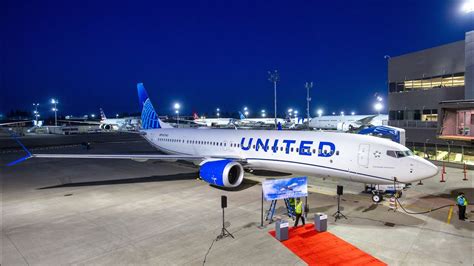The fracas between Boeing and Bombardier seems focused on a fear at Boeing that Bombardier could become another Airbus. That is highly amusing. In the ITC documents Boeing talks up a CS500 as the outcome they anticipate being the growing threat.
The C Series is a five-across cabin compared to the six-across 737. That is a key data point. The 737 is a much larger aircraft. Boeing describes the Delta order as the starting point for Bombardier’s threat. This is not groundless. We are reliably informed that Delta expressed interest in a three-member C Series family as early as 2011. No doubt Boeing heard about that back then and dismissed the notion. After all Bombardier was thrashing about looking for orders and Boeing was not threatened.
A potential CS500 will be a stretch of the CS300. We understand the wing on the C Series has proven stronger than expected. This means no wing changes are necessary to stretch the aircraft. But there are other limits to a stretch that relate to cabin width. Look at the layout on the two CS300s in service. The CS300 offers a nice wide seat, but clipping that to the 17.5 inch found on a 737 will not provide enough room for six abreast. The only way the C Series can grow to about 160 seats and face off with the 737-800 or MAX8 will be a significant stretch.
To illustrate what that might entail, we use Delta as the benchmark. The table below is our estimate of how the LOPA could look. Obviously Delta and Bombardier could tweak the layout quite differently. To be fair, the seat comfort on a putative CS500 will be an improvement over the 737. But a CS500 needs to grow from its current 29 rows to 34, which is 17.2% more. Five abreast is a serious limit.
Using Delta as a model, the CS500 will lose one seat in first plus and three more in premium economy. Given how US airlines are focused on upselling, this loss of potential revenue will be unattractive. The CS500 could have four more seats in economy, and given the fares, this will not make it especially attractive. Airlines want the revenue in the front, not the back.
It would appear the CS500 would be a longer aircraft than the 737-800 or MAX8. This is not a problem of course. Except it does mean slower loading and unloading for a longer fuselage. Turn times cost money and airlines want to avoid that. So a CS500 had serious hurdles to overcome.
Our quick analysis is not meant to dismiss Boeing’s concern. Bombardier has stretched every aircraft they have made. However, as we can see there are limits Bombardier will hit with a five-abreast cabin.
Besides these though, would it be rational for Bombardier to stretch to a CS500? We think not. The 150-seat and up market just became a lot more crowded and, consequently, unattractive. The C919 and MC-21 are in flight test. These two aircraft will be supported by their national shareholders. Airbus and Boeing have their hands full with increased production rates and new state-sponsored competitors. Bombardier, in all honesty, should not even pop up on their radar because it would be irrational to enter that segment.
Could a CS500 be developed? Yes. Will it be an easy stretch? Probably more difficult than expected because it’s not just a technical challenge, there are also operational implications. Are Boeing’s concerns rational? We don’t think a CS500 is realistic for many years. Boeing will have defined its 797 and be deep into a 737 replacement within the next five years. Besides, the C919 and MC-21 are far more realistic threats because those aircraft will almost certainly have greater stretch capabilities. Indeed, the MC-21 already a stretch in the plan.
Bottom line
Boeing’s focus is on the wrong threat. Pointing to Bombardier stretches credibility because Bombardier cannot simply stretch the C Series. Besides Bombardier will not have the resources to undertake this for several years. By the time any CS300 stretch comes, Boeing will have moved the goal posts because the real threats come from Europe, Russia and China.
Views: 28





Déjà vu Embraer’s four-abreast and now up to 124-seat ERJ’s announced exactly 20 years ago. Exactly the same arguments against 4-abreast cabin were made then, and now after 1,300 deliveries . . . ? Thus airlines must love it, and I flew on it just recently and I have absolutely no complaint!
This is a good point but the E2 orders are not what Embraer hoped for, then this article validates that the E195-E2 with 146 passenger is a stretch way too long. It will be a long narrow tube like the 757-300 which didn’t sell that well.
We can compare Delta’s MD90,737-800 and A320 (all with 160 pax). The CS500 may replace Delta MD-90 (5 abreast, with First/Comfort/Economic 16/25/119). Same number of 160 pax of Delta 737-800 (6 abreast, 16/36/108) and A320 (6 abreast, 16/18/126). https://www.delta.com/content/www/en_US/about-delta/corporate-information/aircraft-fleet.html
As soon as Global 7000 is finalized:
Scenario 1 : BBD goes it alone…a quick simple stretch (~4 rows at about 0.5B$ )…avoiding wing change…wheel gear change…etc…. Will have shorter range…remain a niche aircraft …but will be in production quickly.
Scenario 2: COMAC becomes partner…pumps in 2 to 3 B$….does an up to 185seats with long range version…Airbus and Boeing will have cold sweats 🙂
Exactly, I do not understand why in Business it is proposed here 3*5=15 and not 4*4=16, if CSeries is wider than MD-90. It can add one seat and save one row!
The CSeries can stretch to the length of the longest MD with very little effort. It would be a quick stretch trading range for seats, which actually would compete very well with the 738 and 320, since the vast majority of the current single aisle flights are less than the 2500nm that stretch would have.
Bombardier could work on increasing the range at a later date.
The odds of COMAC or Irkut ramping up production high enough for international sales BEFORE a CS500, are small.
You are confusing two separate and distinct issues – (i) aircraft seating capacity vs. cabin cross-section, and (ii) aircraft seating capacity vs. targeted market segment niche. Embraer with its E-jets has conclusively proven that 4-abreast cabin can be perfectly good for up to ~140 seats, while the CSeries family, A318/319, CRJ-1000, E195-E2 and others of similar size have conclusively proven that there is a ‘black hole’ market segment between nominally 100 and 150 seat capacity, and airlines en masse refuse to purchase aircraft in this market segment. Aircraft with nominally above 100 seats are disallowed by ‘scope clause’ contracts to be operated by low operating costs regional airlines, while mainline airlines need at least 150+ seats to pay for their substatially higher operating costs.
. . . further proof: (i) airline rejection of the ‘CSeries Lite’ (physically the same as CS100 but re-certified with only 99 seats and reduced weights to fit within the ‘scope clause’ limits), and (ii) serious considertion by Bombardier of CS500 (in dire multi-billion financial straits this is the last thing it needs). Are Canadian taxpayers going to continue pumping more and more billions of $’s into this Independent Quebecois politicians’ industrial mega-project with the Bombardier family as a mere proxy? (https://aviationdoctor.files.wordpress.com/2016/06/the-rise-and-fall-of-bombardier-2016.pdf). It only shows Bombardier’s desperation to get out of this ‘black hole’ market trap at any cost.
There is a difference of fours rows (@ 32 inch) between the CS100 and CS300. The inevitable CS500 should have four more rows at this same pitch. The only thing left to know is if it will be a simple stretch at constant MTOW (trading capacity for range), or if BBD will chose to design a heavier CS500 to maintain the approximate range of the CS100 and CS300.